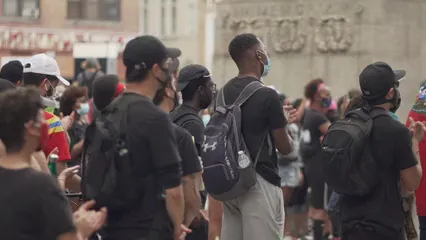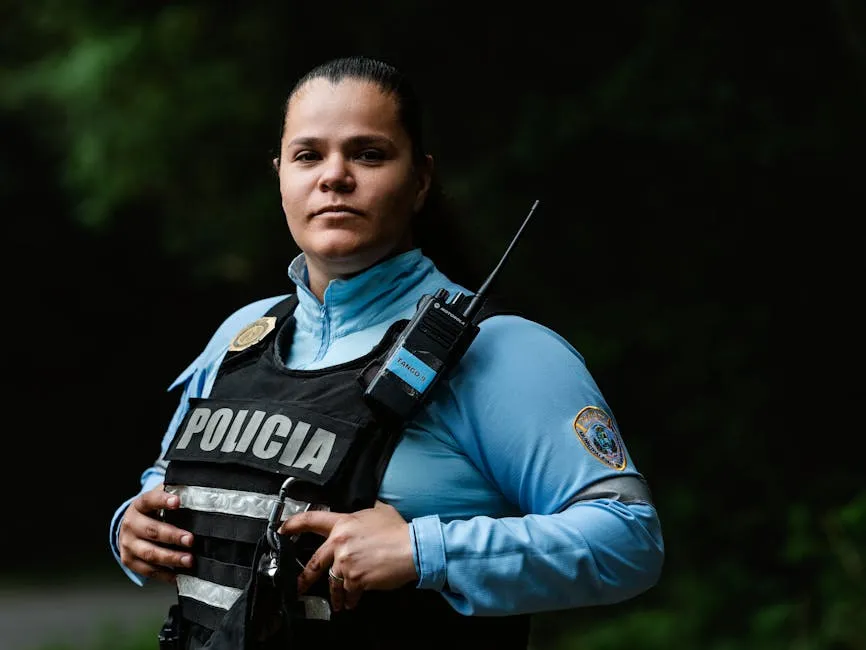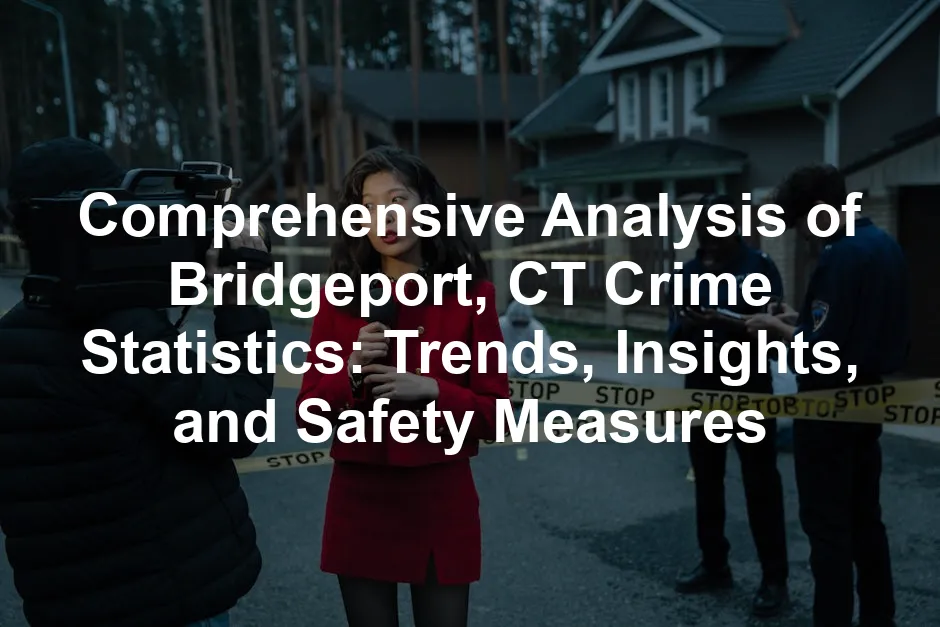Introduction
Welcome to the intriguing world of crime statistics in Bridgeport, Connecticut! This city’s crime data paints a vivid picture, essential for residents, prospective movers, and policymakers. Understanding these statistics helps everyone make informed decisions about safety and community engagement.
Why should you care about crime statistics? Well, for residents, it’s about knowing what to expect in their neighborhoods. For those considering a move, it’s vital to assess safety before packing those boxes. Policymakers can leverage this information to develop effective strategies for crime prevention and community safety initiatives.
This article aims to provide a comprehensive overview of crime rates, trends, and community perceptions in Bridgeport. We will delve into the data to highlight significant insights and safety measures that can benefit the community. From understanding the types of crimes occurring to exploring how the community feels about safety, we’ve got it covered. Buckle up as we navigate through the numbers and stories that shape Bridgeport’s crime landscape!

Understanding Bridgeport’s Crime Landscape
Overview of Crime in Bridgeport
Bridgeport, CT, has its fair share of crime challenges, but it’s not all doom and gloom. The overall crime rate stands at approximately 16.55 per 1,000 residents. This includes both violent crimes and property crimes, with the latter being a more significant concern.
Let’s break it down a bit more: the violent crime rate is about 4.08 per 1,000 residents, while property crimes hit around 12.46 per 1,000 residents. For context, this places Bridgeport’s crime rates above both the national and state averages. In fact, a resident’s chance of becoming a victim of a crime in Bridgeport is about 1 in 60. While these numbers may raise eyebrows, it’s important to view them in light of broader trends.
Recent data from 2022 reveals that Bridgeport recorded a total of 606 violent crimes that year. This includes 15 murders, 52 rapes, 277 robberies, and 262 assaults. When compared to national averages, Bridgeport’s violent crime rate is higher than many cities, but it’s essential to remember that crime is often localized.
For property crimes, the total stands at 1,849 incidents, including 303 burglaries, 971 thefts, and 575 motor vehicle thefts. These figures indicate areas that may require more community vigilance and law enforcement focus.
In summary, while Bridgeport faces crime challenges, understanding these statistics helps the community address safety concerns and work toward solutions. With continuous monitoring and proactive measures, improvement is always possible. Stay tuned as we further dissect the numbers and discover what they mean for the residents of Bridgeport!

Crime Rate Breakdown
Bridgeport, CT, has a complex crime landscape that warrants a closer look. Let’s break down the statistics for a clearer picture of violent and property crimes.
Violent Crime Statistics
| Crime Type | Number of Incidents | Rate per 1,000 Residents |
|---|---|---|
| Murder | 15 | 0.10 |
| Rape | 52 | 0.35 |
| Robbery | 277 | 1.87 |
| Assault | 262 | 1.77 |
| Total Violent Crimes | 606 | 4.08 |
The chance of becoming a victim of a violent crime in Bridgeport is approximately 1 in 245. While these numbers might seem alarming, they are useful for understanding the local landscape.

For those looking to enhance their home security, consider a Home Security Camera System. This nifty gadget allows you to keep an eye on your property 24/7, so you can finally stop worrying about whether you left the door unlocked or if your neighbor’s cat is plotting against you.
Property Crime Statistics
| Crime Type | Number of Incidents | Rate per 1,000 Residents |
|---|---|---|
| Burglary | 303 | 2.04 |
| Theft | 971 | 6.54 |
| Motor Vehicle Theft | 575 | 3.88 |
| Total Property Crimes | 1,849 | 12.46 |
Here, the chance of becoming a victim of property crime is about 1 in 80. This higher rate emphasizes the importance of vigilance in the community.
Understanding these statistics helps residents know where to focus their safety efforts. With the right knowledge, Bridgeport can work toward reducing these numbers and enhancing community safety. To help you feel safer, consider investing in Door Lock Security System. A good lock gives you peace of mind, so you can rest easy knowing your home is as secure as Fort Knox—well, almost!

Crime Trends Over the Years
Yearly Crime Trends
Analyzing crime data over the last several years reveals patterns that can help us understand the current state of safety in Bridgeport.
A glance at the data shows a notable shift in crime rates:
- 2018: Total violent crimes peaked at 744.
- 2019: A decrease to 604 was recorded.
- 2020: The number dropped further to 400, indicating significant progress.
- 2021: A slight increase to 418, though still below 2018 levels.
- 2022: Recorded 606 violent crimes, a concerning uptick.
For property crime:
- 2018: Recorded incidents were at 1,920.
- 2019: A decrease to 1,680.
- 2020: Continued the trend, hitting 1,330.
- 2021: A rise to 1,400, but still lower than 2018.
- 2022: The number settled at 1,849.
Visual aids, such as charts, can enhance our understanding of these trends. A bar graph depicting yearly changes can illustrate the fluctuations clearly, making it easier to spot patterns.
One standout trend is the violent crime decrease from 2018 to 2020. Factors contributing to this decline may include targeted law enforcement initiatives and community outreach programs.
However, the increase noted in 2021 and beyond raises concerns. Understanding local dynamics, such as economic conditions and community engagement, will be critical in addressing these trends.
In summary, Bridgeport’s crime statistics provide a foundation for understanding safety in the area. With continuous monitoring and strategic initiatives, the city can work toward improving its crime rates and ensuring a safer environment for all residents.

Notable Yearly Changes
Bridgeport, CT, has seen considerable fluctuations in its crime rates over the years. Notably, 2022 brought a significant drop in violent crime, with incidents decreasing from 744 in 2018 to 606. This decline might seem like a reason to pop the confetti, but let’s dig a little deeper.
So, what contributed to this promising trend? One key factor could be the increased focus on community policing and law enforcement initiatives. The Bridgeport Police Department ramped up efforts to engage with residents, fostering trust and cooperation. As neighbors got to know their officers, crime rates began to shift.
Economic factors play a role, too. When communities thrive economically, crime often takes a backseat. In Bridgeport, local job opportunities have improved over recent years, possibly leading to a decline in property crime. It’s a classic case of “happier citizens tend to break fewer laws.”
However, the uptick in crime in 2021 reminds us that the battle against crime is ongoing. Economic pressures and social dynamics can quickly influence crime trends. Continued investment in community initiatives and economic development will be vital in maintaining this positive trajectory.

Neighborhood-Specific Crime Data
Crime by Neighborhood
Bridgeport’s neighborhoods offer a mixed bag when it come to crime statistics. Understanding these localized trends is essential for residents and potential movers alike.
Let’s take a closer look at some neighborhoods:
- Black Rock: Known for its waterfront charm, Black Rock boasts some of the lowest crime rates in Bridgeport. Residents enjoy a sense of safety, with many feeling secure walking their dogs at night.
- North End: This neighborhood strikes a balance. It’s relatively safe but has pockets where property crime remains a concern. Community efforts, such as neighborhood watch programs, are making a difference. You can support such initiatives with a Neighborhood Watch Sign to deter potential troublemakers!
- Downtown: While vibrant and lively, Downtown Bridgeport has seen higher crime rates. The nightlife can lead to spikes in certain crimes, particularly theft and robbery. However, increased police presence has been noted.
- South End: This area has faced challenges with crime, particularly property crimes. Residents often voice concerns about safety, making it an area where vigilance is crucial.
- East Side: This neighborhood has witnessed a rise in violent crime statistics. Community organizations are working hard to change the narrative, focusing on youth programs and outreach initiatives.
In summary, Black Rock stands out as one of the safest neighborhoods, while the East Side faces ongoing struggles. By arming themselves with knowledge about these local crime rates, residents can make informed decisions about where to live and how to engage in their communities.

Local sentiments also reveal interesting insights. A recent survey showed that while many feel safe in their neighborhoods, a significant percentage express concerns about property crime. This highlights the importance of ongoing community engagement and support for local law enforcement. A Personal Safety Alarm can be a great tool to feel more secure while out and about!
Understanding the nuances of crime in Bridgeport’s neighborhoods can empower residents. By fostering community connections and actively participating in safety initiatives, neighborhoods can work together to enhance their safety and quality of life.

Community Sentiment
Understanding how residents feel about safety can be as crucial as the statistics themselves. Recent surveys reveal a mixed bag of sentiments among Bridgeport’s residents. For instance, out of 81 respondents, 49% reported feeling “pretty safe,” indicating that while there are concerns, overall, they feel secure. However, 37% described their feelings as “somewhat safe,” suggesting noticeable safety issues. Only 9% felt “very safe,” while 5% admitted to feeling “not safe” at all.
Interestingly, these sentiments often reflect the reality of crime statistics. While the overall crime rate in Bridgeport is 16.55 per 1,000 residents, making the odds of becoming a victim about 1 in 60, perceptions of safety can vary widely depending on the neighborhood. For example, areas like Black Rock boast lower crime rates, contributing to the feeling of security among residents. In contrast, neighborhoods such as the South End, with higher crime incidents, understandably cause anxiety among their inhabitants.
In summary, the community’s feelings about safety don’t always align with the statistics. The nuances of crime rates and the situations in specific neighborhoods play a significant role in shaping residents’ perceptions of safety.

Law Enforcement and Community Safety Measures
Overview of Law Enforcement
The Bridgeport Police Department plays a pivotal role in maintaining safety and order in the city. Comprising approximately 378 full-time law enforcement employees, including around 330 officers, the department is tasked with protecting a diverse population of about 148,654 residents. This translates to a ratio of about 2.30 officers per 1,000 residents, which is slightly above the Connecticut state average of 2.10 officers per 1,000 residents.
Officers in Bridgeport are responsible for various functions, including patrolling neighborhoods, responding to emergencies, and investigating crimes. The department has made strides to improve community relations through initiatives like community policing, which emphasizes collaboration between police and residents.
The police department also focuses on proactive measures, such as educational programs and outreach efforts, designed to foster a safer environment. These initiatives aim to build trust and rapport within the community, encouraging residents to engage with law enforcement positively.
In recent years, the department has adapted to the needs of the community, implementing new strategies based on evolving crime trends. As crime rates fluctuate, the police department remains vigilant, actively adjusting their tactics to address specific concerns effectively.
Overall, the Bridgeport Police Department works diligently to ensure that residents feel safe and secure. With a dedicated team of officers and a commitment to community engagement, the department seeks to create a safer Bridgeport for all its residents.

Community Safety Initiatives
Bridgeport, CT, is taking strides toward a safer community through various innovative programs. One of the key players in this effort is community policing. This approach emphasizes building trust between law enforcement and residents. Police officers become familiar faces in neighborhoods, fostering collaboration. A friendly cop is often more effective than a stern enforcer!
Outreach programs also play a big role. They engage residents, inviting them to participate in safety discussions and activities. These initiatives are not just about crime prevention; they also promote community bonding. When neighbors know each other, they’re likely to look out for one another. That’s a win-win!
Public awareness campaigns have become increasingly important, too. These campaigns educate residents about crime prevention techniques. From locking doors to reporting suspicious activity, knowledge is power. When the community is informed, everyone benefits. For those wanting to be better prepared, consider an Emergency First Aid Kit—you never know when a scraped knee or a paper cut might happen!
In summary, Bridgeport’s community safety initiatives are a shining example of how collaboration can lead to positive change. By focusing on community engagement, education, and outreach, the city is not just combating crime; it’s building a resilient community.

Conclusion
In reviewing the crime statistics and trends in Bridgeport, we uncover a complex but hopeful picture. The overall crime rate in Bridgeport stands at approximately 16.55 per 1,000 residents, with violent crimes hitting around 4.08 per 1,000. These figures reveal challenges but also progress. The city has witnessed fluctuations in crime rates, particularly in recent years. Significant reductions in violent crime from 2018 to 2020 showcased the effect of targeted law enforcement initiatives and community engagement. However, the uptick in crime in 2021 and 2022 serves as a reminder that vigilance is key.
Continuous monitoring of crime statistics is vital for understanding the evolving safety landscape. Local authorities must stay informed and responsive to trends, adjusting strategies to meet community needs. Equally important is the role of community involvement. Residents can actively participate in safety initiatives, fostering a sense of ownership over their neighborhoods. When residents engage with local law enforcement and community programs, they contribute to a safer environment.
Moreover, collaboration between residents and police can pave the way for innovative solutions. Community policing, outreach programs, and public awareness campaigns are just a few examples of proactive measures that can make a difference. When communities unite in their efforts to enhance safety, they can create lasting change.
In conclusion, Bridgeport’s path toward improved safety is ongoing. By embracing continuous monitoring and active community involvement, residents can help shape a brighter future. Safety isn’t just about statistics; it’s about creating a supportive, engaged community ready to tackle challenges together. So, let’s all roll up our sleeves and get involved!

FAQs
What is the overall crime rate in Bridgeport, CT?
The overall crime rate in Bridgeport is approximately 16.55 per 1,000 residents, which includes both violent and property crimes.
How does Bridgeport’s crime rate compare to other cities in Connecticut?
Bridgeport’s crime rate is higher than many cities in Connecticut. For instance, neighboring cities like Stratford and Fairfield report lower crime rates, making Bridgeport a bit more challenging in comparison.
What measures are being taken to improve safety in Bridgeport?
Bridgeport is actively implementing community policing initiatives, outreach programs, and public awareness campaigns aimed at reducing crime and enhancing community safety.
Are there specific neighborhoods in Bridgeport that are safer than others?
Yes, neighborhoods like Black Rock and North End are considered safer, while areas such as Downtown and South End face higher crime rates.
What can residents do to enhance their safety?
Residents can participate in neighborhood watch programs, attend community meetings, and stay informed about local crime trends. Engaging with law enforcement and being proactive can significantly enhance personal and community safety.
For more detailed insights into Bridgeport’s crime data, check out this analysis on bridgeport crime statistics.
To stay prepared for any emergencies, consider adding a Emergency Preparedness Kit to your home supplies. You never know when disaster might strike, and being prepared can make all the difference!
Please let us know what you think about our content by leaving a comment down below!
Thank you for reading till here 🙂
All images from Pexels




